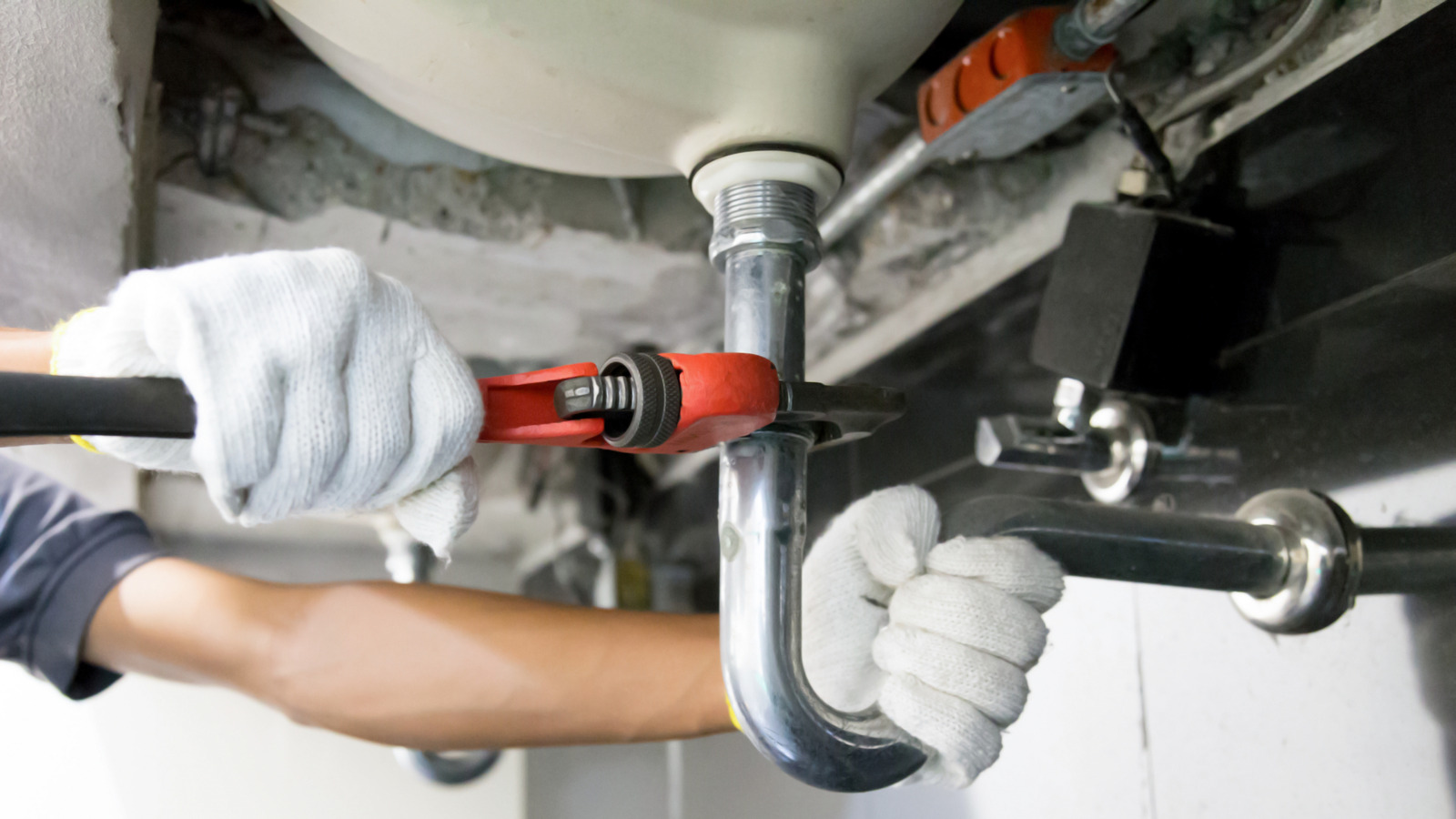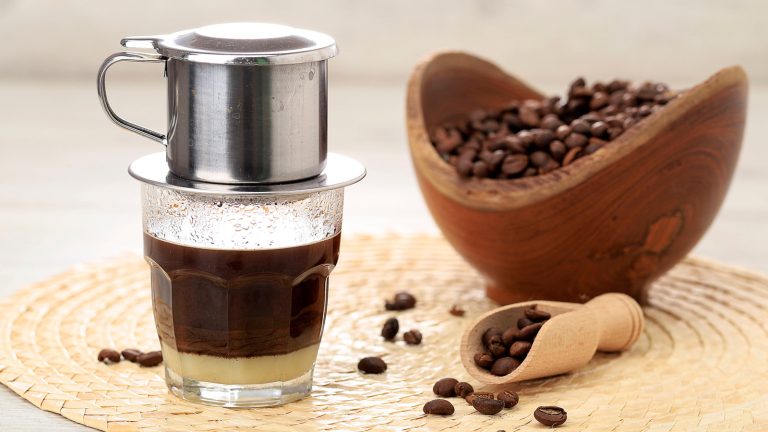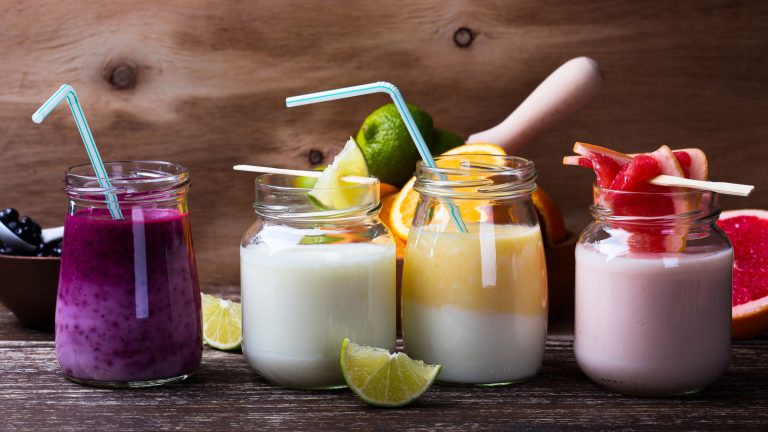We may receive a commission on purchases made from links.
If you’re dealing with less-than-ideal drainage in your kitchen sink, you may have a clog on your hands. This can happen even with meticulous maintenance and care, so knowing how to handle a clog quickly and efficiently will keep things moving in your kitchen as well as your pipes.
Before you call in a pro, try a hack using items that you already have around the house. You’d be surprised how well a simple flush can work to get a clogged kitchen sink drain clear again. Many of the items that cause problems in the kitchen are different types of foods, so anything that helps dissolve organic matter tends to work well on these clogs. For more stubborn problems, you may need to turn to stronger chemicals or commercial solutions. These can be difficult to work with, but go to town on any built-up gunk in just a few minutes.
Prevention is also helpful in reducing clogs in the first place. Follow best practices for disposing of certain kitchen waste to keep it from building up in the drain or pipes. I got insider tips from Farook Member, Director and Home Improvement Expert at QS Supplies, and Alex Atkinson, a plumber at Super Brothers. If you are working with a clogged kitchen sink drain, here are some of the fastest and easiest ways that they know to get things cleared up.
1. Try a hot water rinse
Before you head to your local hardware store to pick up any tools or solutions, start by giving the sink a thorough rinsing with hot water. This hack is the simplest, but it can be the most effective. Farook Member recommends using a hot water flush if you’re dealing with a clogged kitchen sink.
“To clear out a clogged sink, it is always best to begin with the easy route and work from there,” says Member. “Flushing a kettle of hot water through the drain works wonders, especially if grease is the source of the clog.” The water should be very hot, almost to the point of boiling, when it goes down the drain. You can boil water on the stove, then take it off the heat and slowly apply it to the clog. A true flush should be done in multiple stages. Pouring the hot water slowly will let it work on the clog and avoid any splashing that could damage your skin.
Alex Atkinson also uses hot water as a follow-up to other cleaners, pouring at least a gallon down the drain after other solutions do the work. “The boiling water dissolves any remaining grease and cleans the pipes,” he says. Not only does this work for many clogs, it can also be easier on your pipes than using a harsher chemical-based alternative. This is one reason why experts recommend starting with hot water and only trying stronger methods if absolutely necessary.
2. Use a mixture of baking soda and vinegar
Baking soda and vinegar combine into a kitchen miracle-worker, which can be used to clean everything from your dishwasher to your microwave (just don’t use it on your wood cabinets, where they can ruin the finish). For kitchen sink issues, however, this mixture is one of the best hacks that we know of for a variety of clogs. The two ingredients mixed together are the next solution to try after a hot water flush and can help dislodge more stubborn clos in your kitchen drain. They also help freshen things up thanks to their odor-eliminating properties. If you find that your kitchen sink stinks, give a solution of baking soda and vinegar a try.
“I recommend using about 1/2 cup of the baking soda and then 1/2 cup of white vinegar,” says Alex Atkinson. “After pouring them in, cover the drain with a plug or a wet rag to contain the fizzing action within the pipe. Leave it for 15 to 30 minutes, the chemical reaction disintegrates organic matter.” You should use plenty of hot water to clean any extra gunk out once you’re done. This also helps ensure that any extra fizzing is put to work and moves things further down your system.
“The combination of these natural remedies smoothes out the buildup while deodorizing it,” adds Farook Member. I’m a big fan of any hack that keeps the kitchen sparkling clean and smelling fresh, all while using ingredients that I already have on hand.
3. A flexible drain snake can break up clogs
If you find that last week’s fiery fajitas are making their presence known by preventing normal draining, you may need to go a step beyond a simple flush. Any type of flexible drain snake can be used to physically remove gunk that is clogging up your kitchen sink drain. You can get to built-up clogs with this handy tool because it moves through the pipes with flexibility. You’re limited to as far as you can get the tool down the pipes, but they come in different lengths and you typically don’t need a ton of tool to get to the problem.
Along with a plunger, Farook Member recommends keeping a flexible drain snake around because it’s not expensive but can come in handy. It’s better to have one when you need it than to let a clog build up for too long and get worse.
Alix Atkinson likes to use a drain auger, which has a flexible end to grab onto any clogged material. He recommends the Cobra version that is long as well as versatile. It can tackle clogged pipes in the kitchen sink as well as bathroom plumbing issues. “It’s cheap, easy to operate, and effective at capturing hair, food particles, and other clogs deep within the pipe,” he says. Heavy-duty versions are often made of metal and feature a handle to help extend the snake. Shorter snakes are typically made of plastic, but still have removable handles that attach to a new extension with each use.
4. A sink plunger can move clogs along
Another useful tool to keep on hand is a special sink plunger. Don’t get these confused with a standard toilet plunger, even though they use the same basic principles to remove clogs. A plunger creates a seal around the drain and creates suction as you work the handle. The clog begins to dislodge enough so that it can be flushed down the pipes.
A sink plunger, such as Luigi’s sink and drain plunger, has a shorter handle and a special design that allows it to fit perfectly over a standard kitchen sink drain. It pushes air into the pipe to force the backup past where it is stuck. You can rinse it right in the sink when you’re done, adding a little bit of bleach to disinfect it before storing. The key requirement is that it creates a good seal so that it can be most effective.
Alex Atkinson uses a sink plunger on clogs that are closer to the actual top of the drain. “When using a plunger, make sure you cover any overflow holes with a wet rag so the suction will focus on the clog,” he says. If the clog is too far down the pipe, Atkinson turns to a drain snake or auger instead. But he still recommends trying these manual remedies before turning to any harsher chemical-based cleaners.
5. The Flexisnake Drain Weasel is a helpful tool to have on hand
Farook Member recommends the Flexisnake Drain Weasel to manually remove clogged debris, calling it an “awesome tool to use when you need to remove hair and grime.” While you hopefully aren’t dealing with much hair build-up in your kitchen sink, finer food particles like corn silk can build up along with regular residue.
This is a specific type of drain snake, but with more than 34,500 reviews on Amazon and a unique design, it’s worth calling out on its own. This version is made of plastic and comes with five snakes and one detachable handle. You don’t need to worry about reusing the portion that goes into your pipes, keeping things sanitary as well. The plastic snake has a flexible tube, plus a rough end that traps any built-up gunk in your sink. You’ll need to insert the snake into the drain, then turn it using the provided handle.
It’s a particularly effective remedy for bathroom sink clogs, but it can also be used in the kitchen. The snake itself is only 18 inches long, which can get to most shallow clogs and to the trap. When you pull the snake out, it’ll come with any built-up reside attached to the end, so be ready with a garbage bag close by. But if you have a clog that is lodged further down in the pipes, the drain weasel may not be long enough to reach. In that case, you’ll have to try a longer snake or auger.
6. Chemical drain cleaners are an effective last resort
If you’ve put something down your kitchen sink that you shouldn’t, such as old coffee grounds and oatmeal, you may need to resort to drastic measures if it clogs. Even though they can be pretty harsh, there’s no denying the effectiveness of chemical cleaners on the most clogged kitchen sink drains. If you’ve tried home remedies and manual methods, it may be time to up your sink-clearing game.
A chemical-based cleaner can dissolve just about anything, but be sure to follow the safety instructions included. This will prevent issues not just for your plumbing system but also your own health. Some chemical cleaners are so harsh that you need to wear gloves or other protective gear to keep from splashing your skin. Farook Member uses chemical cleaners “as a last resort” for the most stubborn clogs because they can damage your pipes and the environment over time. He recommends trying home-remedy hacks such as baking soda and vinegar or a hot water flush first.
Alex Atkinson tries to avoid lye-based cleaners and those with sulfuric acid. “While fast, they are abrasive, can harm older pipes, and be dangerous when used incorrectly,” he says. Instead, he likes to use commercial products for preventative maintenance since they aren’t as strong. If you’re choosing a drain cleaner, pay attention to the surfaces and materials it can be used with as well. Some cleaners can be harmful to metal, including both the sink surface and the plumbing.
7. Clean the trap
The trap is where things tend to build up in your kitchen sink, so don’t forget to clean it periodically. It’s typically shaped like a U or J, which helps the water flow the way as it should without backing back up into the sink. To clean the trap, just open up the pipes. Doing this before a small amount of gunk becomes a huge clog that impacts draining can help you avoid more extreme remedies, not to mention keeps your sink and kitchen smelling fresh.
“Don’t neglect the trap that’s under the counter,” says Farook Member. “That’s where clogs are most apt to form.” As you put food down the disposal, rinse off dishes, and even wash your hands, all of that gunk gets stuck in the pipes and doesn’t always get cleared. The result is an area of build up at the curved section of pipe just under the drain.
Member says that cleaning the trap is easy and can even save an expensive call to the pros in the long run. “Opening it up with your foot while having gloves on with a bucket handy will clear it out without having to call in the professional handyman.” You may need to loosen the trap with a few turns of a wrench in order to open it. Make sure that the water isn’t running and have a bucket underneath the trap to catch any debris and extra water when the pipes disconnect.
8. Enzyme-based cleaners are fast-acting
If you don’t want to use something harsh but still want a fast-acting solution to prevent clogs, an enzyme-based cleaner can be a good option. These are a bit more eco-friendly than harsh chemicals because they use biodegradable enzymes to break down matter that is clogging your sink. “They contain natural enzymes and bacteria that digest organic debris safely without harming septic systems or pipes,” says Alex Atkinson. “They’re most useful if you have slow drains rather than a full clog.”
A cleaner like Bio-Clean can be used to periodically clean your kitchen drain and dissolve anything that might be starting to form a clog. Don’t wait until you notice slow draining, however. Instead, create a monthly enzyme-solution cleaning regimen. These solutions are made with enzymes and microbes that eat up any organic waste, eliminating it completely. Enzyme cleaners work best with organic matter, such as food, which means they’ll be extra effective in the kitchen. But this option may not work on super built-up grime and grease. It’s best to apply it periodically as a preventative measure or when you notice that the sink isn’t draining as fast as usual.
9. Don’t pour grease down the drain
One of the biggest culprits of clogged drains is grease, but it’s commonly found in kitchens thanks to tasty ingredients like bacon. But when you’re done making your favorite breakfast meat, don’t pour the grease down the sink as an easy disposal method. You’ll be sure to deal with a clog or two in the future as this builds up. Even if you don’t see the impact of grease and oil right away, they will combine with food particles that go down the drain to form even bigger issues later.
Alex Atkinson says that keeping oil and grease out of your sink is a fantastic hack to keeping it from getting clogged. He cautions homeowners against putting any sort of greasy residue down the drain. Keep in mind that some dishes may have small traces of oil and grease on them, which can cause backups if you put them right in the sink to wash. Instead, let the grease cool and wipe it off with a paper towel before tackling your sink full of dirty dishes. This will keep the majority of the grease out of the drain.
When he does have to deal with grease-based clogs, Atkinson turns to the baking soda and vinegar hack as an effective method. “In most residential clogs, especially those caused by grease, soap scum, or food sediment, the baking soda and vinegar solution is a wonderful natural hack,” he says.
10. Periodic maintenance helps prevent clogs
One of the best ways to deal with clogs is to help prevent them in the first place. “A simple tip I offer clients is to circulate hot water through drains regularly after each use,” says Alex Atkinson. As you are washing dishes at the end of the day, turn your water to hot and let it run straight into the drain.
This is an easy step that doesn’t require any special know-how, tools, or cleaning solutions. But it can work wonders to keep things moving. You don’t need to boil the water to get it piping hot for this hack to be effective. Simply turn on the hot tap in your kitchen sink and flush out any extra food particles or residue from cooking or washing dishes. You’ll get a sparkling sink as well as plumbing that works the way it’s supposed to. Let it run for a few minutes to get everything flushed down past the trap, where the majority of clogged drains run into problems.
Atkinson adds that keeping drains clear of “hair and food particles can prevent most clogs from happening in the first place.” One of the best ways to prevent clogs from forming is to keep buildup in check. Staying on top of your sink’s performance will also allow you to recognize any kitchen sink leaks before they cause major issues in your home.





